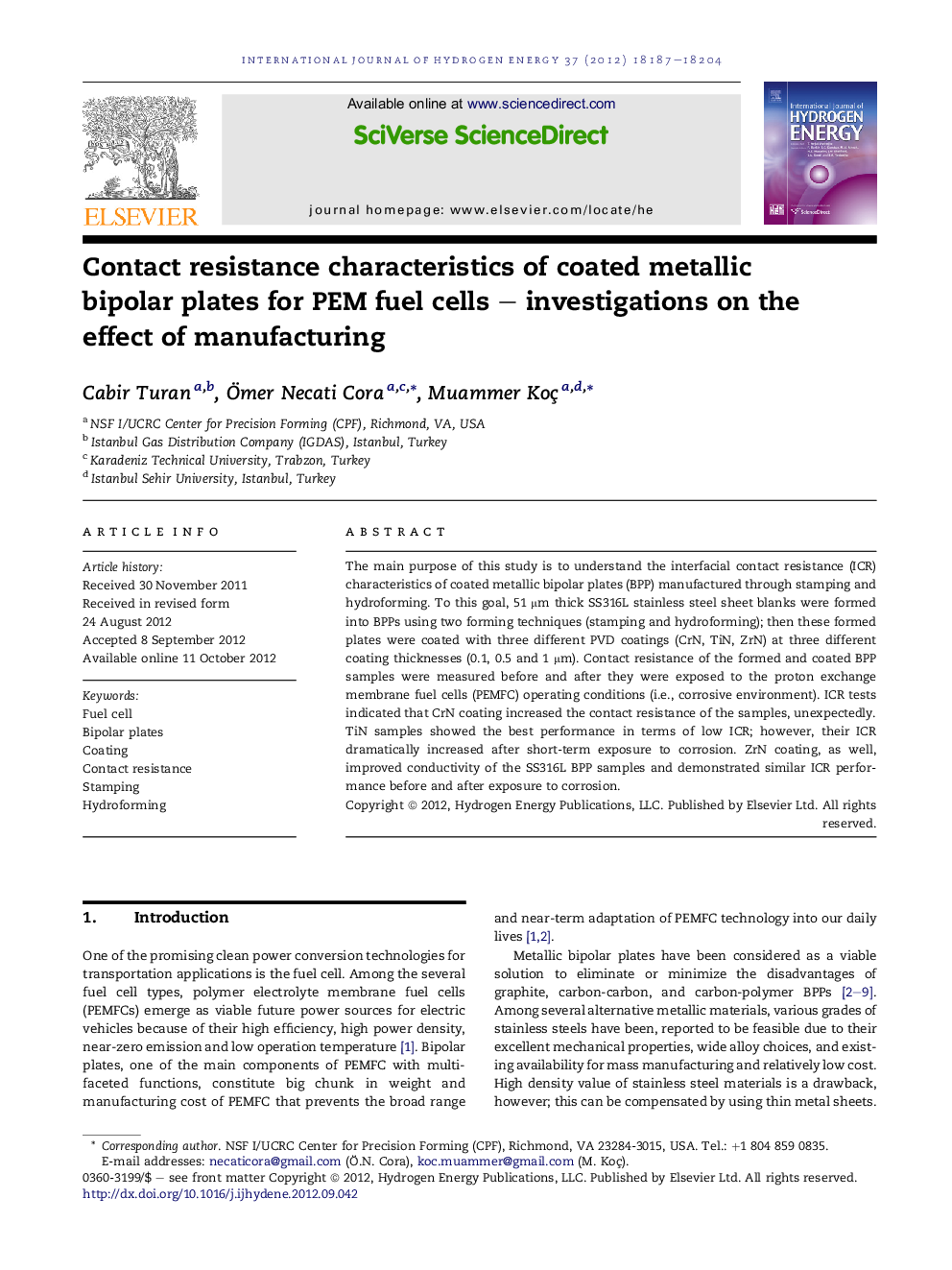| Article ID | Journal | Published Year | Pages | File Type |
|---|---|---|---|---|
| 1278338 | International Journal of Hydrogen Energy | 2012 | 18 Pages |
The main purpose of this study is to understand the interfacial contact resistance (ICR) characteristics of coated metallic bipolar plates (BPP) manufactured through stamping and hydroforming. To this goal, 51 μm thick SS316L stainless steel sheet blanks were formed into BPPs using two forming techniques (stamping and hydroforming); then these formed plates were coated with three different PVD coatings (CrN, TiN, ZrN) at three different coating thicknesses (0.1, 0.5 and 1 μm). Contact resistance of the formed and coated BPP samples were measured before and after they were exposed to the proton exchange membrane fuel cells (PEMFC) operating conditions (i.e., corrosive environment). ICR tests indicated that CrN coating increased the contact resistance of the samples, unexpectedly. TiN samples showed the best performance in terms of low ICR; however, their ICR dramatically increased after short-term exposure to corrosion. ZrN coating, as well, improved conductivity of the SS316L BPP samples and demonstrated similar ICR performance before and after exposure to corrosion.
► Effect of three PVD coatings on ICR of manufactured bipolar plates has been investigated. ► Contact resistance of coatings was found in descending order of CrN, uncoated, ZrN, TiN. ► Coating thickness range tested was found to be significant in contact resistance test results. ► Only TiN coated bipolar plates met the contact resistance requirements set by DOE. ► Stamped and hydroformed BPPs yielded similar contact resistance performances.
